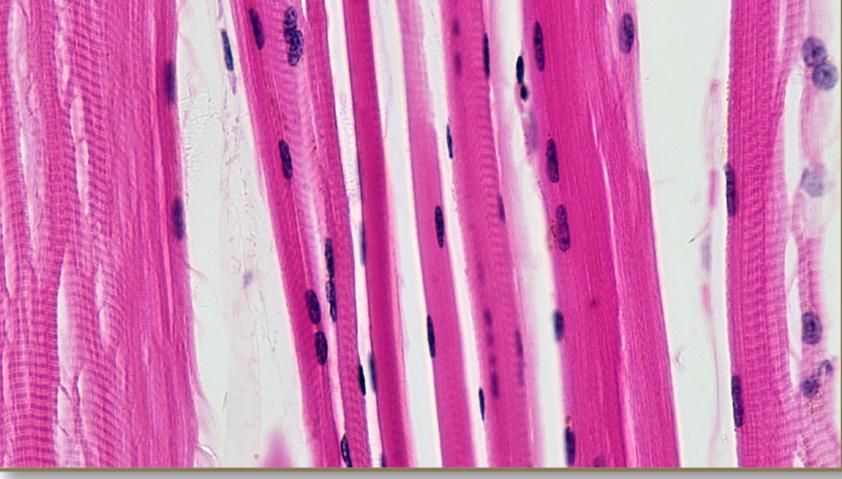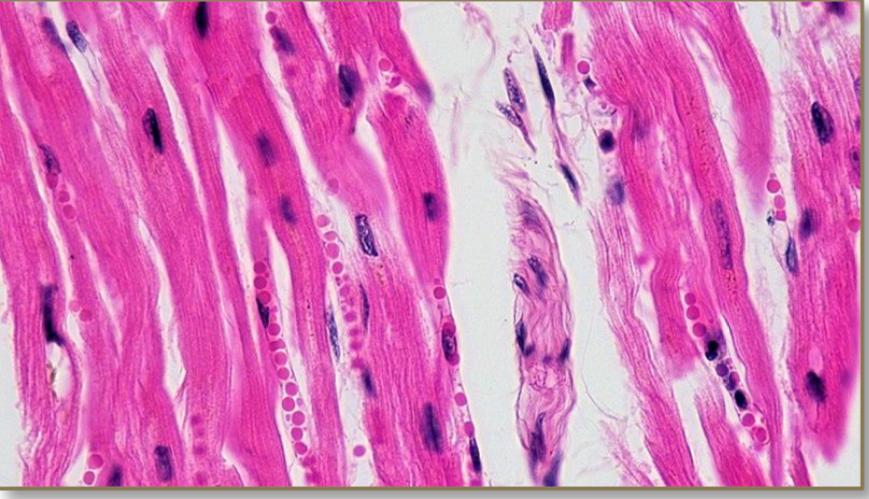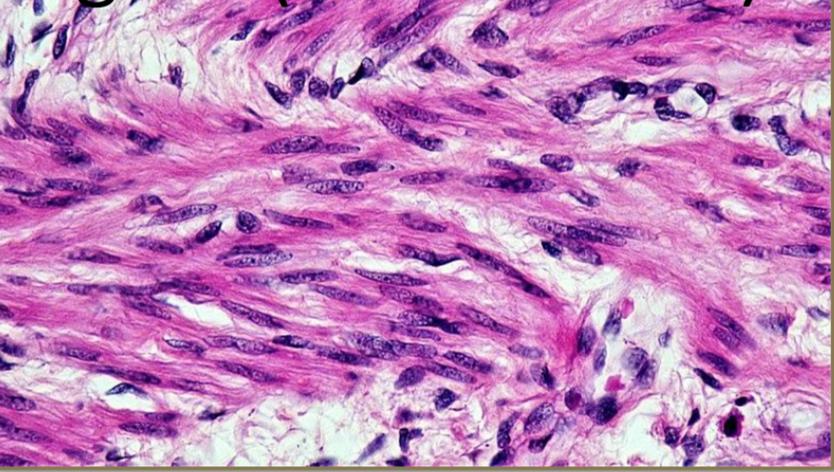what are the functions of the muscular system?
Produces movement, maintains posture, stabilizes joints, generates heat.
the ability to respond to a stimulus
Excitability
The ability to shorten when stimulated
Contractability
the ability to lengthen or stretch, even past their original shape
Extensibility
the ability to recoil or bounce back to the original shape and length after being stretched
Elasticity

connects to bones
Cylindrical
• Striated (muscle
fibers have
stripes)
• Multinucleated
•
Voluntarily
controlled
• Contracts slowly or
very quickly
skeletal muscle

Found in heart
• Branched
• Striated
•
Uninucleated
• Involuntarily
controlled
• Mostly slow
and
steady contractions except during short periods of activity
Cardiac Muscle

Found in walls of internal organs (ex: stomach)
• Arranged in
uniform layers
• Nonstriated
• Uninucleated
•
Involuntarily
controlled
• Slow contractions,
sustained
for long periods of time
smooth muscle
Skeletal muscle is attached to bone by tendons
-Made of many bundles of fibers
Muscle
Bundles within muscles
Fascicle
Long, thin muscle cells
-Each is covered by sarcoplasmic reticulum, which transmit an impulse to the muscle fiber
Muscle Fiber
-Thread-like organelles of the muscle fibers
-Structured in long, striated units called sarcomeres
MyoFibril
2 types of filaments: actin (thin) & myosin (thick) make up the sliding filament model of the muscle
-Responsible for contracting activity of muscle fibers
Myofilaments
the membrane that covers the whole muscle
Epimysium
membrane that covers a fascicle
Perimysium
membrane that covers an individual muscle fiber
Endomysium
space between two Z-lines
sarcomere
____ and ____ filaments work together to produce a muscle contraction.
Actin; Myosin
• Nerve impulses are sent to the muscle fibers to begin
contraction.
• Myosin filaments have rounded extensions called
heads. These heads attach to the twisted actin filaments and pull on
them. The Z-lines get closer together, and the sarcomere gets shorter.
sliding filament theory
energy required for the sliding filament theory
ATP
ATP is formed through ___ ____.
Cellular respiration
Cellular respiration depends on the presence of ______.
oxygen
Step one of muscle fatigue
muscles are worked strenuously and the glucose supply is exhausted.
Intense Exercise
Step two of muscle fatigue
ATP is no longer efficiently being used for cross-bridges
Muscle Fatigue
Step three of muscle fatigue:
Muscles begin to burn, causing you to stop exercising before cells are injured
Anaerobic Respiration
Step four of muscle fatigue
A difference occurs between the amount of oxygen available and the amount required and you are “out of breath”
Oxygen Debt
Muscles are attached to bones by ____.
tendons
The attachment of the tendon to the more stationary bone is called the _____.
origin
The attachment to the more movable bone is called the ______.
insertion
the middle of the muscle
belly
muscle doing the action
prime mover
muscles that help in that same direction
synergists
opposing muscle relaxing during motion
Antagonist